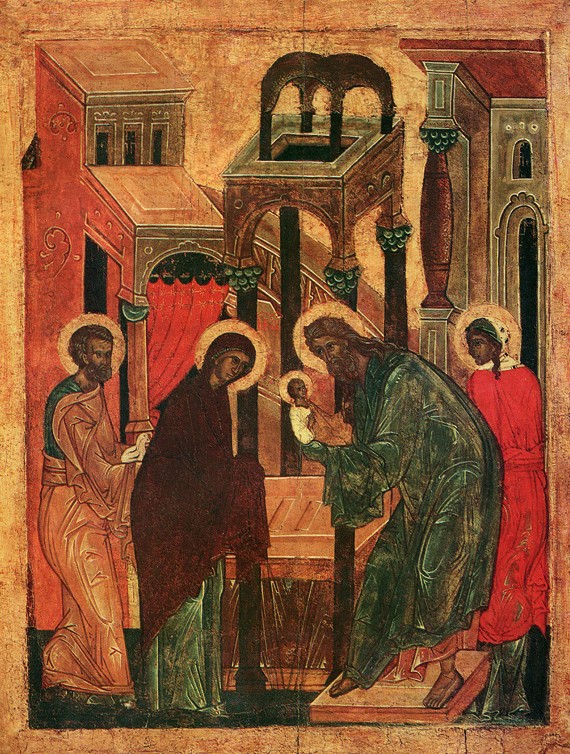
The Meeting of Christ in the Church XVI Century. Pskov
Posted on 11/06/2019 7:11:44 PM PST by marshmallow
A theology of colours and images, rather than words
In Russia, the first art to appear and flower was religious art, or iconography. Icons, or religious paintings and frescoes comprised a key into the spiritual realm; they carried a deep and subtle theology through images. Through them, Christian stories and teachings became accessible even to those who couldn’t read.
For only images have the power to transcend both illiteracy and other linguistic boundaries. And while words are a powerful tool for explaining things, images speak the language of beauty that everyone seems to understand.
Icons still weave narratives and communicate ideas through colours, perspective, size and much else. And while most people can instinctively understand, at least partially, many of these subtle cues, knowing them helps the viewer more fully appreciate the depth of this ancient art style.
Here are a few pointers on how to decipher the world of the icon.
1. The Colour Code: What do certain colours communicate to the believer?
In icons, colours are rarely arbitrary, never chosen at whim in a fanciful flight of the artist’s self-expression. Instead, different hues have acquired meanings throughout the centuries and help artists communicate theological truths or narrative concepts.

The Meeting of Christ in the Church XVI Century. Pskov
Gold, for example, has come to represent the heavenly world and the radiance of the Divine. Nimbus clouds, or halos, that depict sainthood on religious images are typically gold in both Eastern and Western religious traditions.
For this reason, the background of the icon, as well in Western paintings before the Rennaisance, is often gold: the sacred image is likes a window which opens to reveal a glint of heaven to the viewer.
Red, perhaps the most multidimensional colour in iconography, symbolises the fire of the Spirit, by which the.....
(Excerpt) Read more at russian-faith.com ...
Going to the mountain to see the fire spirit..
Why does no one feel the fire spirit?
Maybe the artist just liked the colors?
Or these were the pigments least likely to fade over time?
Or maybe the paint monger gave kickbacks or bribes for the purchase of a large amount of his paint.
they were pretty heavy into symbolism and the psychology of color- I’ve studied art a bit, and artists were always experimenting with color to try to manipulate the viewer’s emotions- later artists like Manet, Seurat, Pissaro, and movements like fauvism and even expressionists like Van Gogh were really heavy into color psychology
Later
Disclaimer: Opinions posted on Free Republic are those of the individual posters and do not necessarily represent the opinion of Free Republic or its management. All materials posted herein are protected by copyright law and the exemption for fair use of copyrighted works.